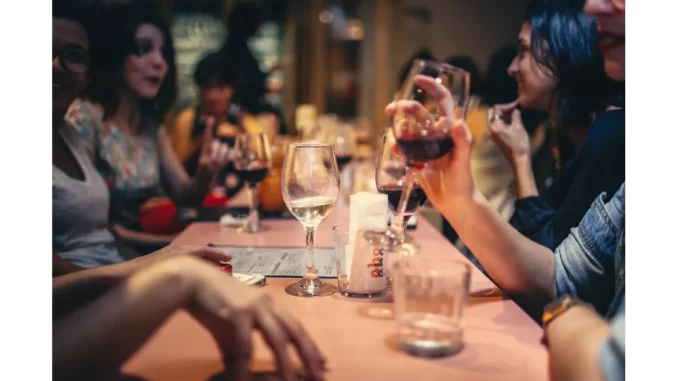
Exploring the World of Wine Futures: A Sophisticated Guide to En Primeur
The realm of wine is a vast tapestry of complexity and elegance, appealing to both the casual enthusiast and the dedicated connoisseur. Among the myriad intricacies lies the practice of “wine futures” or “en primeur,” a centuries-old tradition that continues to captivate the wine industry. This sophisticated method allows aficionados to purchase wines while they are still maturing in barrels, long before they are bottled and available on the market. This guide delves into the origins, evolution, and significance of en primeur, highlighting its roots in Bordeaux and its expansion to other esteemed wine regions.
The Origins of En Primeur: Bordeaux’s Legacy
The en primeur system, as it is recognised today, has its origins in Bordeaux—a region synonymous with the pinnacle of wine excellence. While the practice of selling unfinished wine to merchants dates back several centuries, it wasn’t until the 1980s that consumers began engaging directly with this system. Historically, once wine was transferred to barrels, it was sold to négociants (wine merchants) who then aged and stored the wine in their warehouses. These merchants took on the responsibility for the wine’s sale and distribution, often bottling it either in Bordeaux or in prominent markets like the UK.
The 19th century, however, posed significant challenges to Bordeaux’s wine industry. Devastating mildew and phylloxera outbreaks ravaged vineyards across Europe, and the two World Wars further strained the region’s economy. To sustain their operations, producers began selling grapes still on the vine, a practice known as “sur souche.” This method persisted into the 1960s but eventually diminished due to undervaluation issues, especially with the exceptional yet low-yielding 1961 vintage.
The Evolution of En Primeur: A Turning Point
The 1973 oil crisis marked a pivotal moment for the en primeur system. The economic downturn left producers and merchants in dire need of capital. Struggling to sell the 1972 vintage, châteaux lacked the funds to invest in the challenging 1973 and 1974 vintages. However, the 1975 vintage showed promise, and samples were sent to London for buyers to taste and purchase.
The real boom in en primeur sales came with the 1982 Bordeaux vintage. Renowned wine critic Robert Parker gave the vintage a glowing endorsement, urging consumers to buy en primeur. This endorsement, combined with Parker’s influential 100-point rating system, led to a surge in en primeur purchases, particularly in the US. The 1982 vintage is now considered legendary, with early investors reaping substantial rewards.
The Modern En Primeur Market: Benefits and Challenges
The en primeur system offers numerous advantages for both producers and consumers. For producers, early sales provide much-needed cash flow, allowing them to invest in their vineyards and wineries. For consumers, en primeur offers the opportunity to secure sought-after wines at favourable prices. Over time, as wines become scarcer and more desirable, their value often appreciates.
However, the en primeur market has experienced its share of fluctuations. The 2008 abolition of wine tax in Hong Kong sparked a buying frenzy, with prices for top-rated 2009 and 2010 vintages reaching unprecedented highs. This speculative bubble eventually burst, leading to a more cautious and informed market.
In 2012, Château Latour, a First Growth estate, announced it would no longer participate in the en primeur system, opting instead to release wines only when they were ready to drink. While this decision raised concerns about the future of en primeur, the system remains significant in Bordeaux. Each April, the world’s wine trade converges on Bordeaux for “Primeurs” week, organised by the Union des Grands Crus de Bordeaux. This event showcases the latest vintage and generates significant publicity for the region.
The Global Spread of En Primeur: A Worldwide Phenomenon
While Bordeaux remains the epicentre of the en primeur system, the practice has spread to other prestigious wine regions, including Burgundy, the Rhône Valley, Italy, the US, and Australia. Burgundy, in particular, has embraced en primeur, with many estates offering their wines in this manner.
For consumers, buying en primeur offers several advantages. It ensures flawless provenance, as the wine moves directly from the estate to the buyer’s storage, maintaining optimal maturation conditions. Additionally, en primeur allows buyers to purchase wines in various formats, from half-bottles to large formats like magnums and jeroboams.
Navigating En Primeur: Tips for Aspiring Investors
For those considering investing in en primeur wines, here are some expert tips:
- Conduct Thorough Research: Study the wines and vintages you are interested in, paying close attention to critic scores and market trends.
- Select Reputable Merchants: Purchase from trusted merchants with a proven track record in dealing with en primeur wines.
- Diversify Your Portfolio: Invest in wines from various regions and châteaux to spread your risk.
- Plan Your Storage: Decide whether to store your wines in bonded warehouses or take delivery and store them at home.
Conclusion: The Timeless Appeal of En Primeur
The en primeur system represents a fascinating aspect of the wine industry, offering both opportunities and risks. While there are no guarantees of financial returns, the system provides a way to secure rare and sought-after wines at favourable prices. As the market continues to evolve, en primeur remains a valuable tool for both producers and consumers, contributing to the dynamic and ever-changing world of wine. Whether you are a seasoned collector or a novice investor, en primeur offers a unique and sophisticated avenue to explore the timeless allure of fine wines.


Be the first to comment